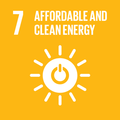Kitemill has developed a technology that harnesses airborne wind energy at high altitudes using a kite.
Airborne wind energy is a renewable energy technology whereby a kite, attached to the ground by a tether, is moved by winds at a high altitude. Unlike conventional wind turbines, which are usually around 100 metres tall, airborne wind energy technologies can reach an altitude of between 500 to 1500 metres, where winds are both stronger and more consistent.
Kitemill’s airborne wind energy technology consists of a kite that is similar in design and shape to a commercial aeroplane, meaning it is built to withstand rough conditions at high altitudes. The kite is attached to a ground station by a thin tether. As the kite is carried by the wind, energy is generated as the tether is pulled, transferring the energy from the kite to the power generator in the ground station. The kite is fitted with an intelligent control system which uses multiple sensors to ensure that the kite flies at an altitude where energy production conditions are optimal.
The company has produced a prototype and estimate that due to lower costs than offshore wind turbines, their technology can offer lower levelised cost of energy compared to current onshore and offshore wind, once they scale up operations. It also allows landlocked countries to access wind energy in their decarbonisation efforts.
Why you should care
Wind power has experienced remarkable growth in recent years, now accounting for more than 11% of electricity demand in the EU and 4% of the world in total. However, constructing wind turbines is resource intensive and expensive to install and maintain. AWE technology uses approximately 90% fewer resources per Watt to construct than conventional wind turbines.
How the Global Goals are addressed
Affordable and clean energy
Because airborne wind energy technology can reach much higher altitudes and consistent winds of 12 m/s, it could be another source of renewable energy, especially for landlocked locations.



